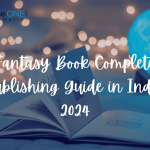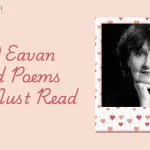Point of view (POV) is the perspective from which a story is narrated or told. It is the way in which the author chooses to present the events, characters, and themes of the story to the reader. Point of view can greatly affect how a story is perceived and experienced by the reader. There are several different types of point of view in literature, including first person, second person, and third person.
You may also like: Literary Elements: A Complete List of Powerful Literary Devices
First Person Point of View:
First person point of view is a popular choice for writers because it creates a strong connection between the reader and the narrator. By using “I” to refer to the narrator, the reader can experience the story more intimately, feeling as if they are experiencing the events firsthand. This can create a sense of immediacy and intensity that is not always present in other points of view.
However, the first person point of view also has some limitations. Because the reader is limited to the knowledge and experiences of the narrator, the story may be biased or subjective. The narrator may only be able to tell their own version of events, which can create an unreliable or incomplete story.
Additionally, the first person point of view may not allow the reader to fully understand the motivations or perspectives of other characters in the story, as the narrator’s knowledge is limited.
Read: Learn what are the main elements of Creative Writing.
You may also like: Adjectives that starts with e | Words Popular in America
Despite these limitations, first person point of view can be an effective tool for creating an engaging and personal narrative. By using this point of view, authors can create characters that are relatable and engaging, drawing the reader into the story and keeping them invested in the outcome.
Additionally, first person point of view can be used to create a unique voice or style for the narrator, allowing the reader to experience the story in a way that is unique and compelling.
Example: “The Catcher in the Rye” by J.D. Salinger is written in first person point of view. The narrator, Holden Caulfield, tells the story of his experiences after being expelled from prep school.
Second Person Point of View:
Second person point of view is unique in that it directly addresses the reader, making them a character in the story. This can create an immersive experience and an intimate connection between the reader and the story. The reader is placed in the position of the protagonist, experiencing the story as if it were happening to them.
However, the second person POV can be challenging to sustain for an entire story or novel because it can quickly become tiresome or feel unnatural. Using “you” for extended periods can also distance the reader from the story, as it may become too obvious that they are being told what to do or think. For this reason, second person point of view is most commonly used in shorter works, such as short stories or poetry.
Despite its challenges, second person point of view can be an effective tool for creating a unique and engaging reading experience. When used effectively, it can create a sense of immediacy and encourage the reader to actively engage with the story. It can also create a sense of intimacy, as the reader is placed in the position of the protagonist and experiences the story from a firsthand perspective.
Read: What is Amazon Kindle Publishing (KDP)? A to Z about Kindle Direct Publishing.
You may also like: 10 Best Fiction Books Set in America You Must Read
Example: “If on a Winter’s Night a Traveler” by Italo Calvino is written in second person point of view. The reader is addressed directly as a participant in the story.
Third Person Point of View:
In third person point of view, the narrator is not a character within the story. Instead, the narrator is an observer who describes the actions, thoughts, and feelings of the characters. There are several different types of third person point of view, including limited, omniscient, and objective.
- Limited Third Person Point of View:
In limited third person point of view, the narrator only knows the thoughts and feelings of one character. This can create a sense of intimacy with that character while still allowing for objectivity and distance from the events of the story.
Example: “To Kill a Mockingbird” by Harper Lee is written in limited third person point of view. The narrator, Scout Finch, only knows her own thoughts and feelings, as well as those of her father Atticus. - Omniscient Third Person Point of View:
In omniscient third person point of view, the narrator knows the thoughts and feelings of all the characters in the story. This allows for a broad and comprehensive understanding of the events and themes of the story, but can also create a sense of distance from the characters and their experiences.
Example: “Pride and Prejudice” by Jane Austen is written in omniscient third person point of view. The narrator knows the thoughts and feelings of all the characters, including Mr. Darcy and Elizabeth Bennet. - Objective Third Person Point of View:
In objective third person point of view, the narrator only describes the external actions and events of the story. There is no insight into the characters’ thoughts or feelings, creating a sense of objectivity and distance.
Example: “The Old Man and the Sea” by Ernest Hemingway is written in objective third person point of view. The narrator only describes the physical actions of the old man and the marlin he catches.
You may also read: What is Historical Fiction? Definition, Chracteristics and Impact
In conclusion, point of view is an important element in literature as it can greatly affect the way a story is experienced by the reader. Understanding the different types of point of view can help readers to analyze and appreciate the nuances of a story’s narrative structure.
Publish your book for free with BlueRoseONE and become a bestselling author. Don’t let your dream of becoming an author fade away, grab the opportunity now and publish your book – be it fiction, non fiction, poetry or more.
You may also like: 7 Point Story Structure: Definition, Examples and More
















